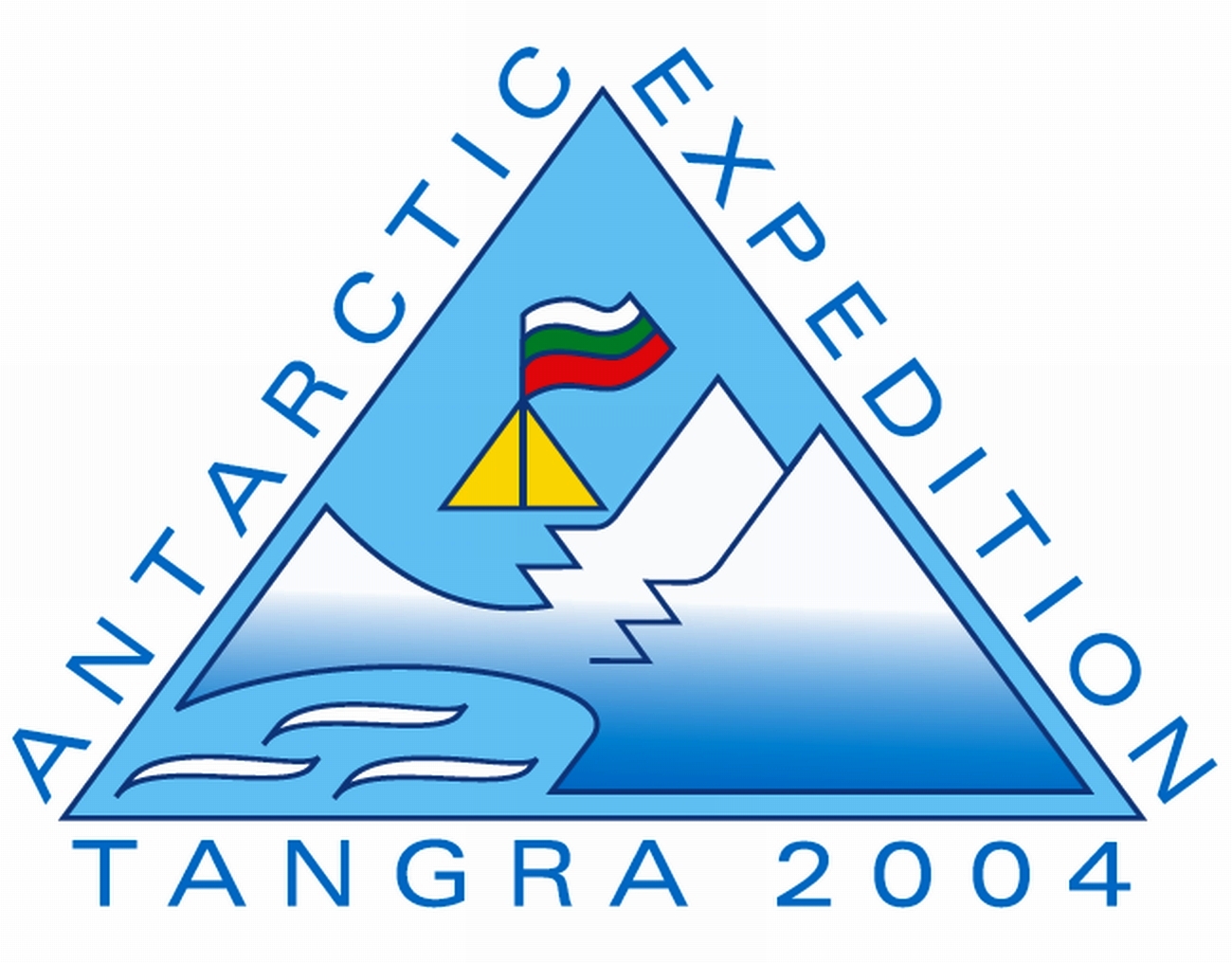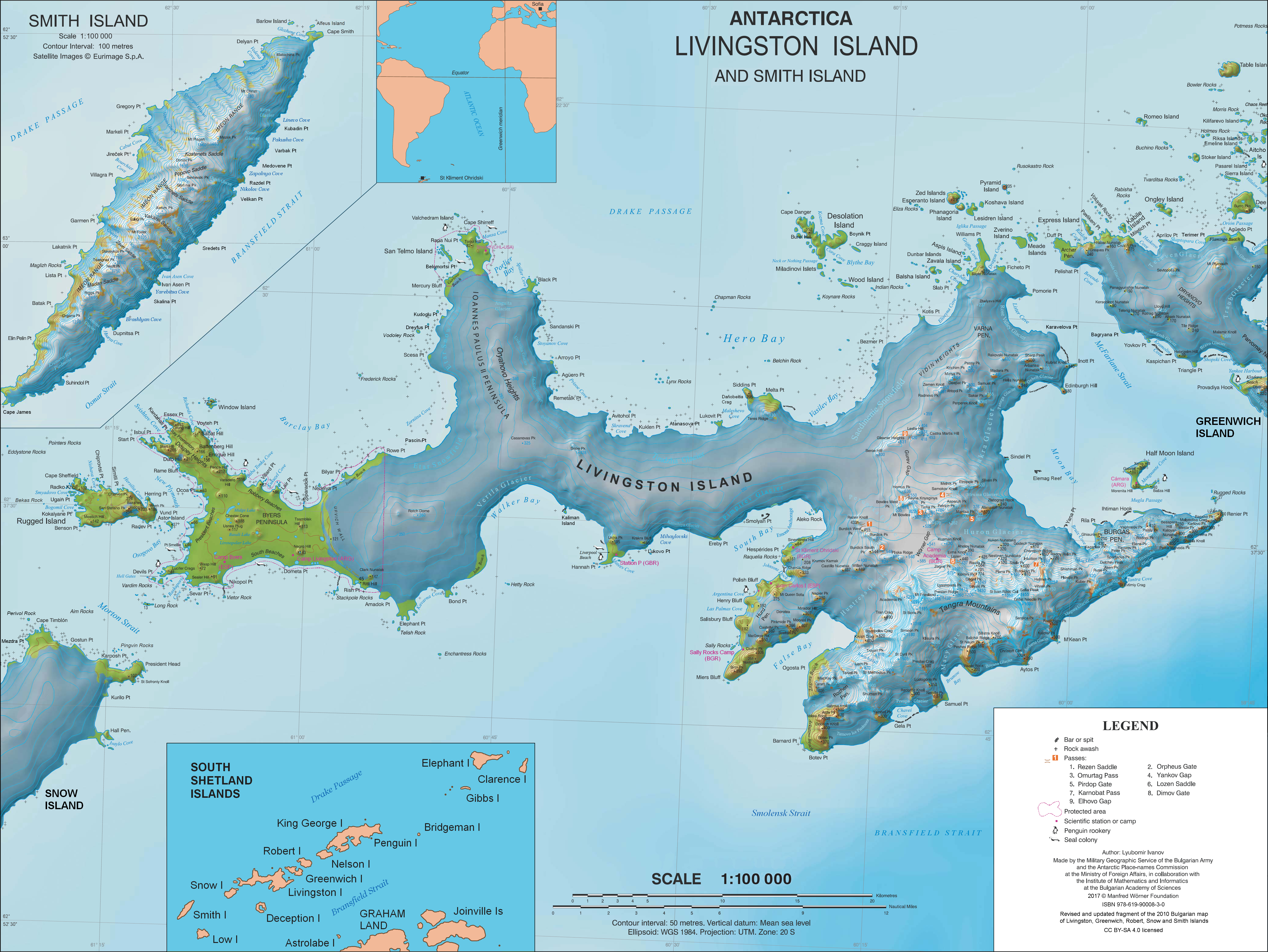|
Samokov Knoll
Samokov Knoll (Samokovska Mogila \'sa-mo-kov-ska mo-'gi-la\) is a peak of elevation 602 m in Yankov Gap area, Livingston Island in the South Shetland Islands, Antarctica. Surmounting Kaliakra Glacier to the northwest and Struma Glacier to the southeast. The peak was first visited by the Bulgarians Lyubomir Ivanov and Doychin Vasilev from Camp Academia on 28 December 2004, as part of Tangra 2004/05 survey, and is named after the town of Samokov in Southwestern Bulgaria. Location The peak is located at which is 480 m southwest of Melnik Peak, 2.46 km northwest of Atanasoff Nunatak, 930 m north of Asparuh Peak, 3.18 km east of Hemus Peak and 4.66 km southeast of Leslie Hill (Bulgarian topographic survey Tangra 2004/05, and mapping in 2005 and 2009). Maps * L.L. Ivanov et al. Antarctica: Livingston Island and Greenwich Island, South Shetland Islands. Scale 1:100000 topographic map. Sofia: Antarctic Place-names Commission of Bulgaria, 2005. * L.L. IvanovAntarctica: L ... [...More Info...] [...Related Items...] OR: [Wikipedia] [Google] [Baidu] |
Tangra 2004/05
The Tangra 2004/05 Expedition was commissioned by the Antarctic Place-names Commission at the Ministry of Foreign Affairs (Bulgaria), Ministry of Foreign Affairs of Bulgaria, managed by the Manfred Wörner Foundation, and supported by the Bulgarian Antarctic Institute, the Institute of Mathematics and Informatics at the Bulgarian Academy of Sciences, Bulgarian Posts, Uruguayan Antarctic Institute, Peregrine Shipping (Australia), and Petrol Ltd, TNT, Mtel, Bulstrad, Polytours, B. Bekyarov and B. Chernev (Bulgaria). Expedition team Dr. Lyubomir Ivanov (explorer), Lyubomir Ivanov (team leader), senior research associate, Institute of Mathematics and Informatics at the Bulgarian Academy of Sciences; chairman, Antarctic Place-names Commission; author of the 1995 Bulgarian Antarctic wikisource:Toponymic Guidelines for Antarctica, ''Toponymic Guidelines'' introducing in particular the present official system for the Streamlined System for the Romanization of Bulga ... [...More Info...] [...Related Items...] OR: [Wikipedia] [Google] [Baidu] |
Antarctic Place-names Commission
The Antarctic Place-names Commission was established by the Bulgarian Antarctic Institute in 1994, and since 2001 has been a body affiliated with the Ministry of Foreign Affairs (Bulgaria), Ministry of Foreign Affairs of Bulgaria. The Commission approves Bulgarian place names in Antarctica, which are formally given by the List of Presidents of Bulgaria, President of the Republic according to the Constitution of Bulgaria, Bulgarian Constitution (Art. 98) and the established international practice. Bulgarian names in Antarctica Geographical names in Antarctica reflect the history and practice of Antarctic exploration. The nations involved in Antarctic research give new names to nameless geographical features for the purposes of orientation, logistics, and international scientific cooperation. As of 2023, there are some 20,125 named Antarctic geographical features, including 1,606 features with names given by Bulgaria. [...More Info...] [...Related Items...] OR: [Wikipedia] [Google] [Baidu] |
Composite Antarctic Gazetteer
The Composite Gazetteer of Antarctica (CGA) of the Scientific Committee on Antarctic Research (SCAR) is the authoritative international gazetteer containing all Antarctic toponyms published in national gazetteers, plus basic information about those names and the relevant geographical features. The Gazetteer includes also parts of the International Hydrographic Organization (IHO) General Bathymetric Chart of the Oceans (GEBCO) gazetteer for under-sea features situated south of 60° south latitude. , the overall content of the CGA amounts to 37,893 geographic names for 19,803 features including some 500 features with two or more entirely different names, contributed by the following sources: {, class="wikitable sortable" ! Country ! Names , - , United States , 13,192 , - , United Kingdom , 5,040 , - , Russia , 4,808 , - , New Zealand , 2,597 , - , Australia , 2,551 , - , Argentina , 2,545 , - , Chile , 1,866 , - , Norway , 1,706 , - , Bulgaria , 1,450 , - , G ... [...More Info...] [...Related Items...] OR: [Wikipedia] [Google] [Baidu] |
Leslie Hill, Livingston Island
Leslie Hill () is a hill lying northward of Bowles Ridge and south of the Vidin Heights in the eastern part of Livingston Island in the South Shetland Islands, Antarctica. Situated north of Mount Bowles, east-northeast of the summit of Gleaner Heights and south-southwest of Radnevo Peak. The hill was named by the UK Antarctic Place-Names Committee in 1958 for David Leslie, Master of the American brig ''Gleaner'', a whaler from New Bedford, Massachusetts, which was diverted to sealing in 1820–21 in the South Shetland Islands, following the discovery of this group. See also * Tangra 2004/05 The Tangra 2004/05 Expedition was commissioned by the Antarctic Place-names Commission at the Ministry of Foreign Affairs (Bulgaria), Ministry of Foreign Affairs of Bulgaria, managed by the Manfred Wörner Foundation, and supported by the ... Maps * L.L. Ivanov et al. Antarctica: Livingston Island and Greenwich Island, South Shetland Islands. Scale 1:100000 topographic map. ... [...More Info...] [...Related Items...] OR: [Wikipedia] [Google] [Baidu] |
Hemus Peak
Hemus Peak (, ) is an ice-covered peak rising to off the northwest extremity of Bowles Ridge in eastern Livingston Island. The feature is breast-shaped, long in east-west direction and wide, and overlooks Kaliakra Glacier to the northeast and Perunika Glacier to the southwest. Hemus is an ancient name of Stara Planina (Balkan Mountains), the central mountain range separating northern from southern Bulgaria. Location The peak is located at , which is northwest of Mount Bowles (, summit of Bowles Ridge), north-northwest of Rayna Knyaginya Peak, north-northeast of Chirpan Peak, northeast of Rezen Knoll, m east by north of Aleko Point, and south by east of the summit of Gleaner Heights () (Rough British mapping in 1968, Bulgarian mapping from a 1995-96 ground survey). Maps South Shetland Islands.Scale 1:200000 topographic map. DOS 610 Sheet W 62 60. Tolworth, UK, 1968. * Islas Livingston y Decepción. Mapa topográfico a escala 1:100000. Madrid: Servicio Geogr ... [...More Info...] [...Related Items...] OR: [Wikipedia] [Google] [Baidu] |
Asparuh Peak
Asparuh Peak (, ) is a peak situated on Livingston Island, Antarctica. The peak rises to 760m in Bowles Ridge and is linked to the Melnik Ridge by the 575m high Yankov Gap. It was named after Khan Asparuh of Bulgaria, 668-700 AD, who incorporated by treaty the territory between the Balkan Mountains and the Danube in 681 AD. Location The peak is located at which is 2.52 km east of the Mount Bowles, 1.26 km south of Melnik Peak and 1.96 km west of Atanasoff Nunatak. See also * List of Bulgarian toponyms in Antarctica * Antarctic Place-names Commission Maps * L.L. Ivanov et al. Antarctica: Livingston Island and Greenwich Island, South Shetland Islands. Scale 1:100000 topographic map. Sofia: Antarctic Place-names Commission of Bulgaria, 2005. * L.L. IvanovAntarctica: Livingston Island and Greenwich, Robert, Snow and Smith Islands Scale 1:120000 topographic map. Troyan: Manfred Wörner Foundation, 2009. * A. Kamburov and L. Ivanov. Bowles Ridge and Central Tangr ... [...More Info...] [...Related Items...] OR: [Wikipedia] [Google] [Baidu] |
Atanasoff Nunatak
Atanasoff Nunatak (Atanasov Nunatak \a-ta-'na-sov 'nu-na-tak\) is a nunatak, a sharp peak rising to in the east extremity of Bowles Ridge, Livingston Island, Antarctica. The peak surmounts Huron Glacier to the south and east, and Struma Glacier to the north. The peak is “named in honour of the Bulgarian American John Atanasoff (1903–1995) who constructed the first electronic digital computer”. SCAR Composite Gazetteer of Antarctica. Location The peak is located at which is next east of , northeast of |
Melnik Peak
Melnik Peak (, ) is the 696 m summit of Melnik Ridge in eastern Livingston Island, South Shetland Islands in Antarctica. Surmounting Kaliakra Glacier to the north and west, and Struma Glacier to the southeast. The peak takes its name from Melnik Ridge. First ascent by Lyubomir Ivanov and Doychin Vasilev from Camp Academia on 28 December 2004, as part of Tangra 2004/05 survey. ''Climb Magazine'', Issue 14, Kettering, UK, April 2006, pp. 89-91. Location The peak is located at , which is 4.04 km southwest of , 2.41 km northwest of |
Bulgaria
Bulgaria, officially the Republic of Bulgaria, is a country in Southeast Europe. It is situated on the eastern portion of the Balkans directly south of the Danube river and west of the Black Sea. Bulgaria is bordered by Greece and Turkey to the south, Serbia and North Macedonia to the west, and Romania to the north. It covers a territory of and is the tenth largest within the European Union and the List of European countries by area, sixteenth-largest country in Europe by area. Sofia is the nation's capital and List of cities and towns in Bulgaria, largest city; other major cities include Burgas, Plovdiv, and Varna, Bulgaria, Varna. One of the earliest societies in the lands of modern-day Bulgaria was the Karanovo culture (6,500 BC). In the 6th to 3rd century BC, the region was a battleground for ancient Thracians, Persians, Celts and Ancient Macedonians, Macedonians; stability came when the Roman Empire conquered the region in AD 45. After the Roman state splintered, trib ... [...More Info...] [...Related Items...] OR: [Wikipedia] [Google] [Baidu] |
Samokov
Samokov ( ) List of cities and towns in Bulgaria, is a town in Sofia Province in the southwest of Bulgaria. It is situated in Samokov Valley between the mountain ranges of Rila, Vitosha and Sredna Gora, 55 kilometres from the capital Sofia. Due to the suitable winter sports conditions, Samokov, together with the nearby resort Borovets, is a major tourist centre. In the past, Samokov was a centre of handicrafts and art, with notable Bulgarian National Revival figures like Zahari Zograf, Hristo Dimitrov and Nikola Obrazopisov. The town's name is a compound word of "samo" and "kov", respectively meaning "self" and the root of the verb "forge, hammer", and comes from the ''samokov'', a mechanical forge powered by water, since the town of Samokov was a major iron-producing centre during the Middle Ages. History It is thought that Samokov was founded in the 14th century as a mining settlement with the assistance of Germans in Bulgaria, Saxon miners under the Second Bulgarian Empire, ... [...More Info...] [...Related Items...] OR: [Wikipedia] [Google] [Baidu] |







